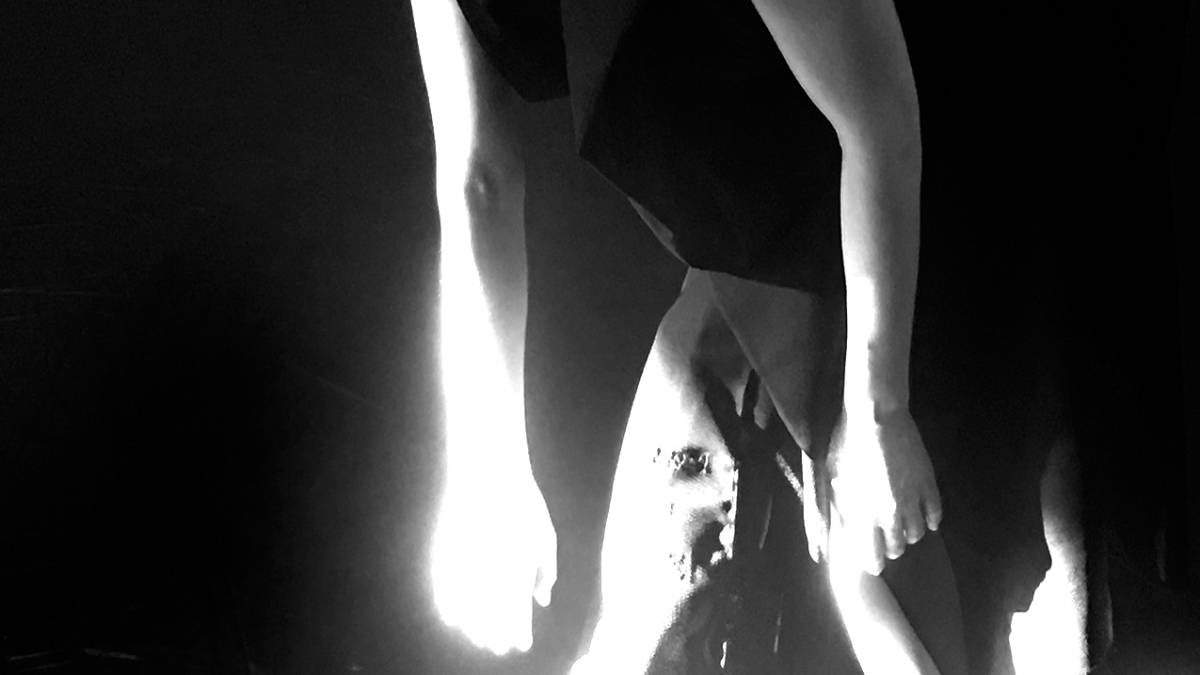ASU dance professors join Japanese dancers to explore the aging female body and performing

Masako Kitaura, a dancer from Japan, will perform in “Enmei (Long Life): A Dance and Aging Project” on June 10. Photo by Eileen Standley
In her final weeks as a dancer with the New York City Ballet, Wendy Whelan famously said, “In ballet, if you’re over 40, you’re a dinosaur.” She was 47 years old at the time.
“There is a tacit understanding in many dance practices, more so in ballet but also in contemporary modern dance, that dancers should stop performing around the age of 40,” said Mary Fitzgerald, assistant director of dance in the ASU School of Film, Dance and Theatre in the Herberger Institute for Design and the Arts. “This has been changing in recent years, but an underlying bias against older dancers still exists quite strongly in the United States.”
Fitzgerald, along with Arizona State University colleagues Eileen Standley and Rose Weitz and two dancers from Japan, is tackling some of these traditional assumptions with “Enmei (Long Life): A Dance and Aging Project,” which premieres June 10 at the ASU Nelson Fine Arts Center.
“The project was inspired by a desire to challenge some of the existing notions about aging and the female body — both within the contemporary dance world and the larger culture,” Fitzgerald said.
For the project, Fitzgerald and Standley, a clinical professor of dance at ASU, teamed with Japanese artists Kei Takei and Masako Kitaura. Fitzgerald danced in Takei's company for nearly 10 years, and Standley and Kitaura performed together for many years as members of Magpie Music Dance Company in Europe.
“We wanted to explore how our respective cultures value and represent women dancers as they age and were curious about how this bias differs across cultures,” Fitzgerald said. “My mentor Kei Takei, for example, is in her 70s and never once has considered that she should stop performing.”
Standley said the enduring passion and dedication to dance shared between all of the artists led them on this creative path together.
“As different as our backgrounds are, we all share the precarity of having survived and thrived as dance artists,” she said. “We have followed where dance has led us throughout our lives, often outside of our cultural contexts. Our need to dance transcends commonly held suppositions about aging and the body.”
The group also enlisted the help of ASU Professor Rose Weitz, a scholar on women and gender studies in the School of Social Transformation. The collaboration with Weitz has given Fitzgerald and Standley more insight into how different cultures shape the experiences of women and embodiment.
“Our bodies are marked by our particular passages in life as women,” Standley said. “Dance has been a pathway for that history to unfold; it not only gives back to our own spirits, but also hopefully to those of others.”
In October, Fitzgerald and Standley traveled to Japan with Weitz to interview older female dancers about their experiences.
“Although some of our assumptions proved inaccurate — ageism and sexism are still quite present in Japanese culture — traditionally older artists (and people) in Japan are treated with great respect. In fact, many older artists are considered to be national treasures.”
The works for “Enmei,” which means “long life” in Japanese, are inspired by the research done in Japan and examine what it means and what it takes to continue dancing as older women. The show is an interdisciplinary event that includes lecture, dance and visual design as well as original music by Kotoka Suzuki, an assistant professor in the ASU School of Music.
This evening of work represents some incredible history, according to Fitzgerald. Kei Takei is a major historical figure in the postmodern dance world. She directed a New York-based company called Moving Earth for almost 25 years before re-establishing herself in Japan during the 1990s. Masako Kitaura has performed all over Europe, and in addition to her dancing, brings her family knowledge of kimono traditions to the design elements of this project.
“We are very fortunate to have these two artists in Arizona,” Fitzgerald said. “Most audiences in our region have not seen their work before.”
The group hopes to perform the work in Japan within the next two years, and plans are already underway to present the piece next year at the Scottsdale Center for the Performing Arts and other venues. The premiere of “Enmei” will be held at 7:30 p.m. Saturday, June 10, at the ASU Nelson Fine Arts Center in Room 122, on the Tempe campus. The event is free.
Fitzgerald said she hopes the performance will challenge people to rethink what it means to watch and actually see older female performers, but she also hopes they take away a little more.
“We also want the audience to take away the visceral joy that we find in movement, as well as a sense of perseverance, insistence and legacy — the endurance of the human spirit.”
More Arts, humanities and education

Local traffic boxes get a colorful makeover
A team of Arizona State University students recently helped transform bland, beige traffic boxes in Chandler into colorful works…

2 ASU professors, alumnus named 2025 Guggenheim Fellows
Two Arizona State University professors and a university alumnus have been named 2025 Guggenheim Fellows.Regents Professor Sir…

No argument: ASU-led project improves high school students' writing skills
Students in the freshman English class at Phoenix Trevor G. Browne High School often pop the question to teacher Rocio Rivas.No,…

